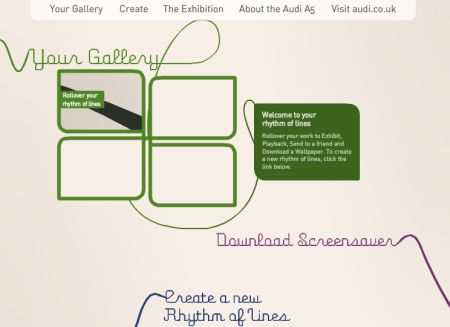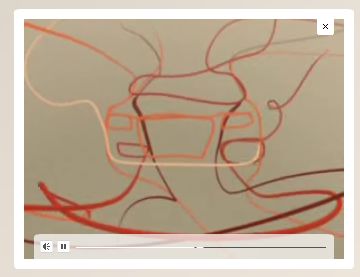von Roland Hachmann | Aug. 13, 2007 | Ad News, Blog, Marketing
Are kids easy to fool? Can a little branding make things much tastier for them? Of course it can! Well, at least this article says it can. Wrap anything in something branded by McDonalds and the kids seem to be liking it!
„You see a McDonald’s label and kids start salivating,“ said Diane Levin, a childhood development specialist who campaigns against advertising to kids. She had no role in the research.
So be careful about the bad effects advertising and branding might have on your kids.
But hey – only your kids? Shouldn’t you also watch out for yourself? Don’t you think it is rather easy to be fooled as an adult, too? Well, think again. Because this article mentions a study, that tested adults for perception of well branded vs not well branded wine.
Of course it’s not about an overarching (golden) brand symbol. But it’s about perception nevertheless. What is your opinion on wine from North Dakota? Don’t have any (opinion, that is)? How about wine from California? That bell makes you salivate?
In that study conducted by Cornell professors, a group of diners was served the same wine, either labeled as wine from california, or labeled as wine from North Dakota – both carrying the name of a non-existent winery. Guess which one the group preferred? Correct!
Branding can be sooo misleading! *g*
von Roland Hachmann | Aug. 12, 2007 | Blog, Digital Culture, Digital Marketing, Digital News, Marketing, Marketing Trends, Social Media Marketing
This seems so obvious, yet it took some time to realize it. According to this Reuters article, Blue Note records (one of the most famous brands for Jazz Music) has dived into offering a digital experience:
The label is in the process of revamping the site to become a social network and digital music store for fans of jazz and blues — the staples of the Blue Note catalog — rather than a simple promotional Web site for its artists.
They are targetting the age group of the 35 to 55 year olds. It’s not the typical target group for downloading music and/or getting heavily involved in social networks, you might think.
But it is indeed a target group
- with more money available than the teens (and apparently more willing to spend it on music, too)
- looking for specialised music – think about the long tail effects of digital music!
There seems to be a trend, as Blue Note is not the first:
Blue Note’s pending Web site is just the latest. Universal Music Group opened a digital jazz and classical music service in the United Kingdom in January, and last December a social networking site aimed at the 35-and-up crowd called Urban Boomer (UBTunes) went live.
von Roland Hachmann | Aug. 9, 2007 | Ad News, Blog, Digital Marketing, Digital News, Marketing, Mobile Marketing, Online Advertising, Social Media Marketing
von Roland Hachmann | Aug. 8, 2007 | Ad News, Blog, Digital Marketing, Marketing, Online Advertising
I agree with Martina. This site does display not much about the new Audi A5. The main site is about lines. Lines and piano music. It is beautiful, almost meditative. Take a look yourself, it is very easy:

But the connection to the car is very far fetched. You get some idea of how they came about the idea for this site when watching the clip in „about the Audi A5“. It is, as you probably imagined, all about the new design of the car:

Nicely done for a product launch campaign. But they will need some follow up later on to lead people to the product site and/or car configurator…
von Roland Hachmann | Aug. 7, 2007 | Ad News, Blog, Digital Culture, Digital Marketing, Online Advertising, SEO / SEA, Social Media Marketing
Some more ramblings on advertising on social networks, as I have written about it lately already: Sean Carton also thinks that advertising on social networks won’t work properly using regular ads. His point of why widgets might be the better solution (and I agree):
This is why widgets have been getting so much play lately: they don’t intrude on the user experience. Yeah, they’re branded. Yeah, they’re obviously a product of crass commercialism, but when done well they enhance rather than detract from the experience. They can become part of the conversation you’re having with friends and acquaintances, not an interruption of that conversation. Are widgets the answer to how advertising can work in social networking?
Not at all, but they’re a beginning. The answer will become apparent when we think outside of the ol‘ display advertising box and start to imagine ways we can work with the essential nature of social networking, rather than against it.
How can we join communities of interest in an authentically helpful way? How can we give consumers the tools to facilitate their conversations about our products or services (conversations they’re going to have anyway, with our without our help)? How can we help connect them to get help, advice, or suggestions from others (Dave Evans has a few good ideas)? How can we make it easier for true believers and brand fans to do the selling for us (or help recruit new fans)? How can we work with what’s going on rather than against it?
The question is, whether this is really a solution for all advertisers. Also, these considerations, same as the debate about the effectiveness of contextual ads only focus on the click rate as the only measure of success. I know, I know, we’re in the interactive space, so why go back to the old ad measurement models?
But then again, an eyeball is an eyeball and nobody can deny the value of attention of these eyeballs. Even if the click rate suggests failure, the message might have stuck. Don’t you think? Otherwise you would reduce the awareness and brand building capabilities of the online space to a story of how many people clicked, not how many people saw and remembered the message. That can’t be right, can it?*
But, going back to Seans point: yes, let’s rather entice the consumers with something of value. Something that provides this value at a point in time and (web-)space, where the consumer will most likely associate the best positive times with your brand because of your contribution to their needs and preferences. If it can be done best on social networks providing widgets (at least for now), then think of a good idea and go do it!
(*I am not oblivious at all to the fact, that interaction with the ads (i.e. clicking and interacting with the subsequent pages) will reinforce the message, make the whole awareness campaign x-times more successful!)



 Wo ich sonst so bin...
Wo ich sonst so bin...